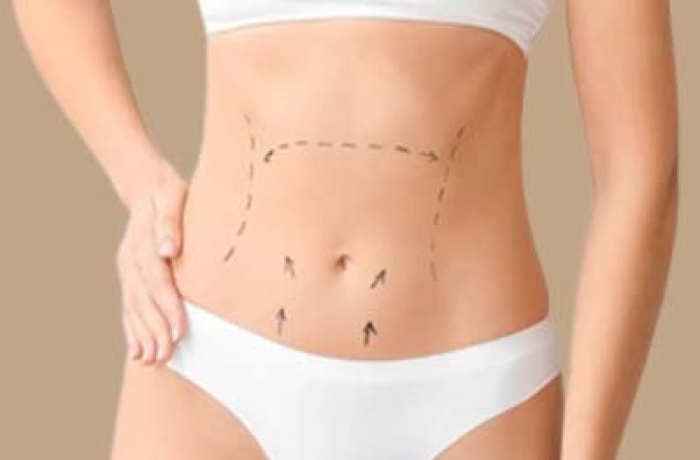Tummy tuck surgery, also known as abdominoplasty, is a cosmetic surgical procedure that is designed to remove excess skin and fat from the abdomen, while tightening the abdominal muscles.
Tummy tuck surgery, also known as abdominoplasty, is a cosmetic surgical procedure that is designed to remove excess skin and fat from the abdomen, while tightening the abdominal muscles. The purpose of this article is to provide readers with a comprehensive understanding of tummy tuck surgery, including who may benefit from the procedure, how it is performed, how to prepare for the surgery, the potential risks associated with the procedure, and what to expect during the recovery process. Whether you are considering tummy tuck surgery for cosmetic or medical reasons, this article will give you a detailed insight into what the procedure entails, so you can make an informed decision about whether it is right for you.
Tummy tuck surgery, also known as abdominoplasty, is a cosmetic surgical procedure that removes excess skin and fat from the abdominal area and tightens the underlying muscles. The goal of the surgery is to create a firmer and flatter abdomen.
While tummy tuck surgery is often associated with weight loss, it is not a weight-loss procedure. Rather, it is meant for people who have loose or sagging skin and weakened abdominal muscles due to factors such as pregnancy, aging, or significant weight loss.
It's important to note that tummy tuck surgery is different from liposuction. While both procedures involve removing fat from the abdominal area,
is a less invasive procedure that only targets fat cells and doesn't involve removing excess skin or tightening muscles.
People may consider getting a tummy tuck for a variety of reasons. For some, it may be to restore their pre-pregnancy body shape. For others, it may be to address the effects of significant weight loss, such as excess skin and weakened abdominal muscles. Ultimately, the decision to undergo tummy tuck surgery should be made after careful consideration of the risks and benefits, in consultation with a qualified plastic surgeon.
Tummy tuck surgery is a cosmetic procedure that removes excess skin and fat from the abdominal area and tightens the underlying muscles to create a smoother, firmer midsection. There are several types of tummy tuck procedures, including the traditional, mini, and extended tummy tucks. The specific procedure recommended by your surgeon will depend on your individual goals and the extent of your concerns.
The surgical process for a tummy tuck usually involves making a horizontal incision along the lower abdomen and removing excess skin and fat. The underlying muscles may also be tightened, and the remaining skin is pulled down and sutured back into place. The belly button may also be repositioned to create a more natural appearance.
The length of the procedure can vary depending on the extent of the surgery, but most tummy tucks take between two and five hours to complete. It is typically performed under general anesthesia, and patients can expect to spend several hours in the recovery room following the surgery.
If you're planning on getting a tummy tuck surgery, it's essential to prepare adequately to ensure a smooth and successful procedure. Here are some things you should consider before the surgery:
1. Pre-operative instructions: Your surgeon will provide you with specific instructions to follow before your surgery. These instructions will include:
2. Consultation with the surgeon: You will have a consultation with the surgeon to discuss your medical history, any medications you are taking, and your expectations from the surgery. Be prepared to answer any questions your surgeon may have about your health and lifestyle.
3. Pre-operative tests: Depending on your age and medical history, your surgeon may order some tests before the procedure, such as blood tests, electrocardiogram (ECG), and chest x-ray.
4. Lifestyle changes: You may need to make some lifestyle changes before the surgery, such as:
Following these pre-operative instructions and lifestyle changes will help ensure that your body is in the best possible condition for surgery, and you'll have a faster and smoother recovery.
Tummy tuck surgery, like any surgical procedure, comes with some risks. Although the procedure is generally safe, there are some potential complications that you should be aware of before undergoing the surgery.
Some of the risks associated with tummy tuck surgery include bleeding, infection, blood clots, and poor healing of the incision site. In rare cases, nerve damage and skin loss may also occur. It's important to note that these risks can vary depending on factors such as age, health status, and the type of tummy tuck procedure performed.
Fortunately, there are steps you can take to minimize the risks associated with tummy tuck surgery. One of the most important things you can do is choose a skilled and experienced surgeon who is board-certified in plastic surgery. Additionally, following your surgeon's pre-operative instructions and maintaining a healthy lifestyle before the surgery can also help reduce the risk of complications.
During your consultation with the surgeon, be sure to ask about the potential risks of the surgery and how they can be minimized. By being informed and prepared, you can take steps to ensure a safe and successful tummy tuck surgery.

In conclusion, a tummy tuck surgery, also known as abdominoplasty, is a cosmetic procedure that involves removing excess skin and fat from the abdominal area to achieve a smoother and flatter appearance. It is often recommended for individuals who have lost a significant amount of weight, undergone pregnancy, or have excess abdominal fat that doesn't respond to diet and exercise.
During the procedure, a surgeon makes an incision in the lower abdomen, removes the excess skin and fat, and tightens the underlying muscles. The recovery period can vary from person to person but typically takes a few weeks, during which the patient should follow the post-operative instructions provided by their surgeon to ensure optimal healing.
A tummy tuck, also known as abdominoplasty, is a surgical procedure that is typically performed to improve the appearance of the abdominal area. While it is not a weight loss solution, it can be an effective way to get rid of excess skin and fat in the abdomen, especially for those who have lost significant weight.

So, who needs a tummy tuck surgery? Candidates for this procedure include individuals who:
It's important to note that not everyone is a good candidate for a tummy tuck. Factors that can affect eligibility for the procedure include:
Before deciding to undergo a tummy tuck, it's important to consult with a board-certified plastic surgeon to determine if the procedure is right for you.

After the surgery, it is important to follow post-operative instructions provided by the surgeon to ensure a smooth and successful recovery process. The first few days after the surgery can be quite uncomfortable, and the patient may need to take pain medication to manage the pain.
It is also important to keep the incision site clean and dry, and to avoid any strenuous physical activity or heavy lifting for several weeks. The surgeon may also recommend wearing a compression garment to help reduce swelling and aid in the healing process.

The recovery period after a tummy tuck surgery can vary depending on the individual, but in general, patients can expect to return to work and resume light activities within two to four weeks after the surgery. However, it may take several months for the swelling to completely subside and for the final results to be visible.
It is important to note that there can be possible complications during the recovery period, such as infection, bleeding, or fluid accumulation. It is important to closely follow the surgeon's post-operative instructions and to contact them immediately if any issues arise.
Overall, a tummy tuck surgery can be a transformative procedure for those looking to improve the appearance of their abdomen. By carefully considering the risks and benefits, and working closely with a qualified surgeon, patients can achieve the results they desire and enjoy a smoother, more toned abdominal area.